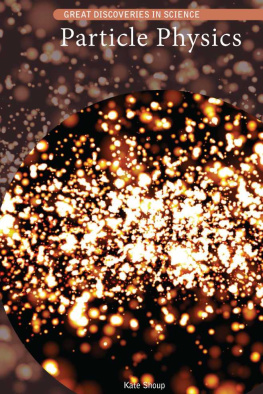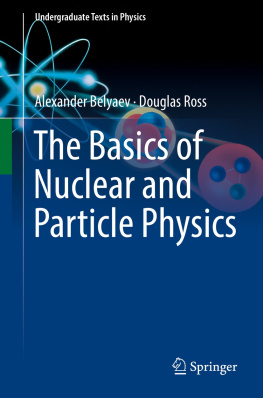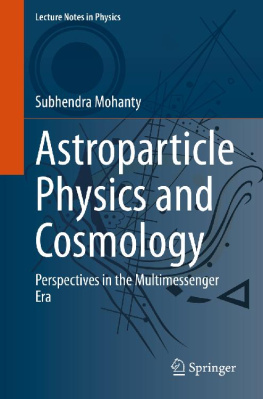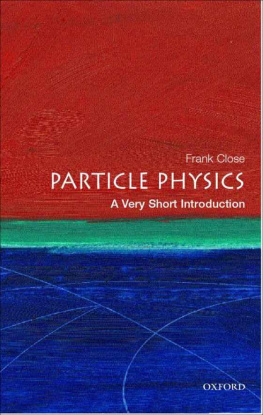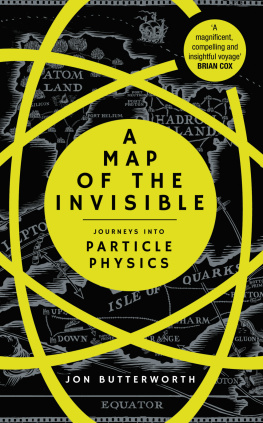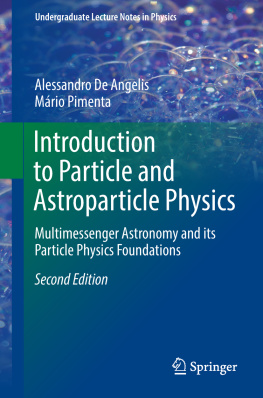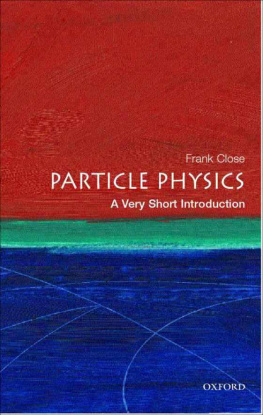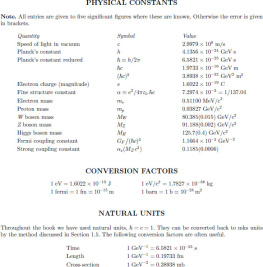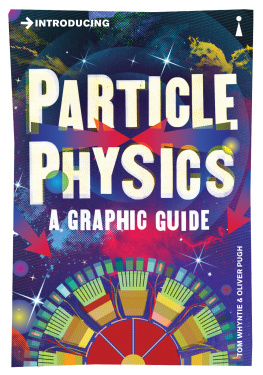Practical Particle Physics
David Michalets
Self-published on December 26, 2020
Table of Contents
1 Introduction.................. 4
Introduction
Practical Particle Physics takes a practical approach to the atomic model and its subatomic particles, by beginning with the observational evidence. This process reviews the theoretical aspects of subatomic particle physics, such as quasi-particles, like photon and graviton. These probably arose with the introduction of Einsteins theory of relativity into physics.
Relativitys unique context of a special moving observers reference frame is reviewed as an application in the narrower scale of particle physics.
The science of particle physics has failed to address a fundamental problem which is commonly called atomic mass defect.
The results of analyzing isotopes across the entire periodic table of 118 elements are presented. The mass defect should be explainable, but it requires a review of the current atomic model.
This book reviews Maxwells work with electromagnetism and light, and it includes the authors proposed mechanism for Newtons force of gravity.
Light and the fundamental forces of electric, magnetic, and gravitational had been explained using classical physics and without the later introduction of quasiparticles, like a photon or graviton.
The electric and gravitational forces are instantaneous and are difficult to explain as a particle behavior, so the fundamental forces are reviewed.
The origin of anti-particles is also part of this review of the Standard Model.
The author wrote 4 books about physics, before this one.
This book will sometimes explicitly adapt text from the other books, but those books are not required to read this one.
The reader can reference any of those books, if this presentation is not convincing enough without all the supporting data contained in the other books.
An emphasis of this book is the mass defect behavior. Though it was mentioned in a previous book, this book is based on the analysis of the changes in mass of isotopes, covering as many as practical. That exercise started with this book, so other books offer nothing on this topic.
Each book of the 5 has its own focus. Physics covers many phenomena, so there is some cross-over between books in the set.
This is a summary of the previous 4 books. All 5 were self-published using Kindle Direct Publishing so all are distributed by Amazon.
1) Observing Our Universe.
Problems arise when ignoring the context of the observer.
The problem with red shift begins by ignoring we view the universe only from on or near the Earth.
The problem worsens when expecting only a simple Doppler effect can cause a red shift. There are actually 4 distinct mechanisms causing a shift in lines within a spectrum, 2 separate mechanisms for galaxies and 2 for quasars.
Halton Arp observed a discrepancy when comparing red shift values but he failed to explain their mechanisms.
There are many wrong conclusions when measurements affected by 4 mechanisms are assumed to be from just a simple Doppler effect.
The correct interpretation of a red shift is explained. The new method for calculating a distance to a distant galaxy is explained.
There is no universe expansion, no dark energy, and there was no big bang.
Nearly all galaxy and quasar values based on the red shift mistake are wrong.
The correct use of a distant galaxy red shift for its distance calculation is proposed.
Einstein proposed a special observer for his theory of relativity.
Objects in the universe do not possess this special observer so relativity does not apply to anything except when accepting one is the special observer and so observations are confined within ones reference frame, which is called space-time.
Relativity should be abandoned, as it was an unfortunate diversion from valid physics. For example, space-time enabled a black hole which violates physics., leading to other impossible things like an accretion disk emitting Xrays.
There is no curvature and the universe does not possess a topology.
Mass does not have a velocity limit at c and gravity does not wave.
LIGO tries to observe gravitational waves using equipment on Earths surface. LIGO ignores their context when claiming to observe the universe for these theoretical waves having no definition in terms of physics making them impossible to detect using a device designed for the waves physical characteristics. Having none, LIGO tries to detect them indirectly with the expectation whatever they can detect could be what they seek. LIGO is bad science, never having evidence for their claims.
In early 2019, this author concluded LIGO is ignoring a terrestrial source which is triggering their detections from a claimed astrophysical source. This terrestrial source is predictable.
In November 2019, this author gave LIGO explicit predictions of LIGO detections which were confirmed by LIGO reports.
Gravitational waves do not exist. LIGO has never detected a gravitational wave. Its claims of mergers have never been verified. Every LIGO claim of detection or confirmation must be ignored, including relativity and black holes.
The first book references studies published by others which explain that dark matter is being proposed wherever a magnetic field is ignored. A magnetic field is not visible but it can be measured when it affects light passing through it.
Numerous studies have confirmed there is no need for dark matter. Perhaps it persists because the Lambda Cold Dark Matter cosmological model requires dark matter for its failed attempt to explain the evolution of the universe after its beginning at the big bang. Numerous people, including this author in several books, have explained why there was no big bang.
CERN and LHC are on a fools errand looking for a dark matter particle which does not exist.
2) Cosmology Transition
The first book noted errors in astronomical data. This second book describes how to fix the data and offers a framework for the organization of data for galaxies and quasars. There is no such framework now.
The transition includes a new solar model from Dr. Robitaille based on the observational evidence, so its mechanism uses thermal radiation from condensed matter, not fusion in an impossible internal equilibrium deep within a gaseous sphere, a model for the spiral galaxy rotation from Dr. Scott, and the authors model for a quasar.
3) Cosmology Connections
The neglected electrical connections in the universe are described, from within our solar system, to beyond. Often light is considered to be from a heat source, like a light bulb having a filament.
Actually, there are many sources of measurable sources of synchrotron radiation spanning from high energy gamma rays to low energy infrared or radio. Synchrotron radiation results from an electric current being diverted by a magnetic field so a broad spectrum of electromagnetic radiation results.
The third book identifies a) mistakes with thermal for synchrotron radiation, and b) sources of magnetic fields and synchrotron radiation.
For example, an X-ray source can be mistaken as an impossibly hot object when it really is synchrotron radiation.
A fictitious black hole with an impossible hot accretion disk is the most blatant example of this mistake.
There are many X-ray point sources in the universe and every one of them is generating synchrotron radiation by an electrical mechanism, not heat.
4) Redefining Gravity
Isaac Newton defined the force of gravity but not the force.
This book defines the mechanism. Some of this material was adapted for this subsequent book.


